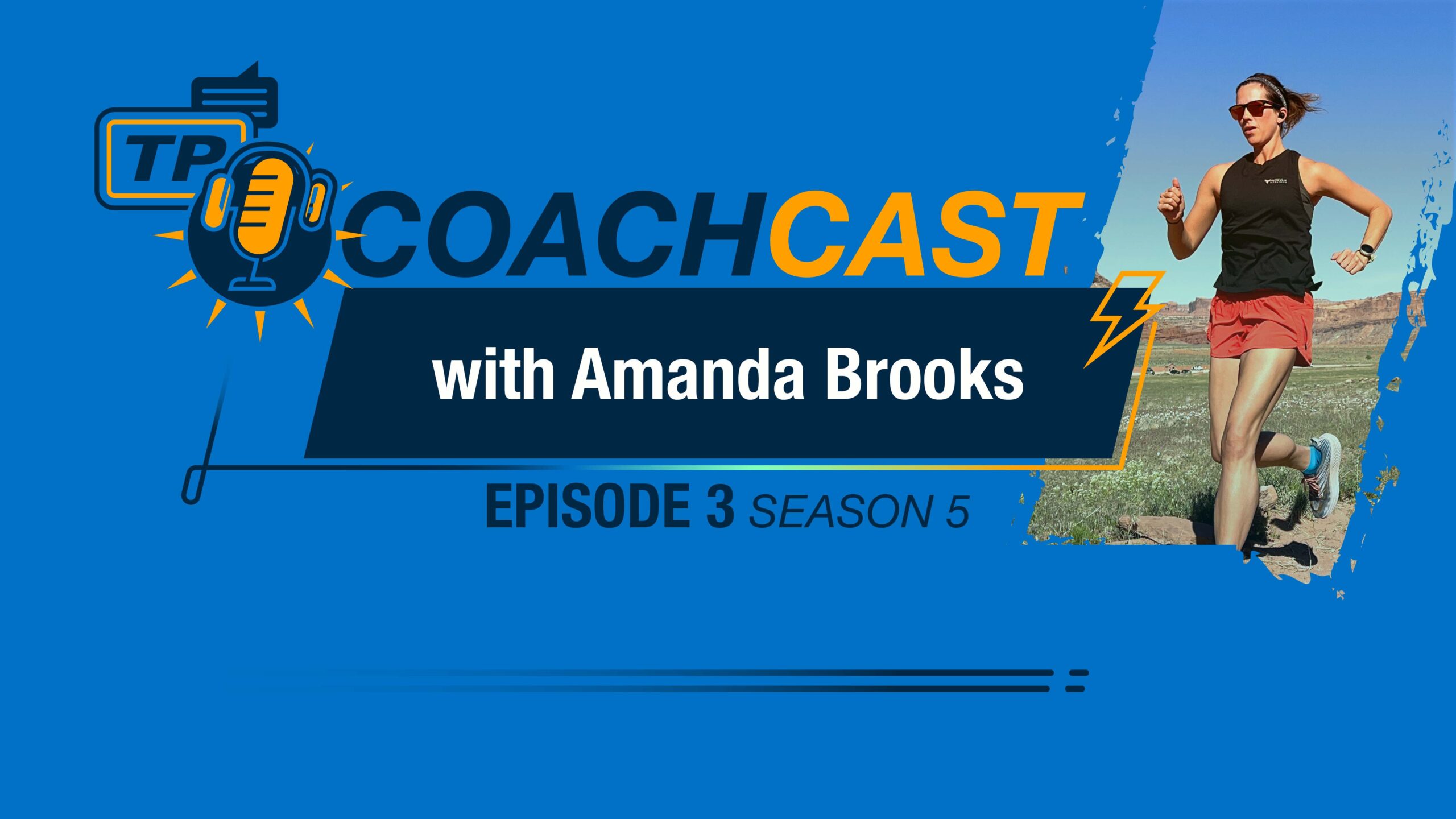Amanda Brooks is a running coach and author who has helped many runners achieve their goals. She is a perpetual blogger and author of several books, including “Run to the Finish: The Everyday Runner’s Guide to Avoiding Injury, Ignoring the Clock,” and has contributed to several publications, including Runner’s World and Women’s Health.
Amanda focuses her coaching and leadership on those runners regardless of pace. She understands that most runners do not dedicate all their free time to training like elites and pros. And she works to guide her athletes to continue to run injury-free and for as long as possible. By using a down-to-earth approach to coaching and keeping the focus on the “why,” she believes people can enjoy the love of running.
Listen in as Amanda and Dirk talk pre-hab, fueling as an aging runner, perimenopause and menopause and how she prescribes intensity even to those 60 and 70+ runners.
Standout Quotes
Sometimes I think I’m kind of a funny running coach because I’m not like, yes, we need to chase a PR, right? But that’s been exciting because I have seen a lot more folks coming [out] the last few years that are like, “I’m not really looking for a race. I just want to figure out how to do this consistently.” And that’s fun for me versus, I have friends who’ve done one marathon and done. I think the difference tends to be when we do the one-and-done, it’s often a really short, intense training period and there’s not really any thought about the after or the next. It’s just, “I’ve got to cross that one finish line and check it off.”
“So instead, I’m often kind of looking at what is it that got you into running. Some folks will be like, “No, I wanted to do that one marathon, and that’s really it.” But for a lot of folks, it was, “Oh gosh, I just I needed something to relieve stress. I wanted a reason to be outside. I wanted to hang out with some of my friends who enjoy it.” And we tend to really lose that ‘why’ as we start racing. Because it is really easy to use numbers as a gauge for whether our running is good or not, and that’s great. It’s exciting to celebrate a PR, but also constantly kind of coming back to that “Oh yeah, you know, I really like to just run because then I’m more productive at work today. I’m more creative. It’s the only time where I’m not looking at my phone.” I think those reasons are super helpful. So if we can find ways to kind of continually tap into that, it helps a lot.
“I had a friend who once told me I was like a running dictionary and yeah, I’ll take it. I love it. I’ve done my research.”
AMANDA BROOKS on Her Blog and Advice for Runners
“… all of my athletes know I like the warm-ups. They hear me preach it. I probably say it once a week on social media. “Like, do the warm-up.” And for me, the warm-up isn’t just like some leg swings. It’s where I actually sneak in pre-hab. So it’s doing some lunges, it’s doing glute bridges, it’s doing a little core work. So we’re hitting on the hips, glutes and core, which pretty much every PT will tell us are the main reasons we end up getting injured because they’re weak.
“So if I can get you to sneak in, you know, three minutes, five minutes, even 10 minutes of that before every single run, oh, man, that’s a massive win. And the other thing we’re doing is kind of waking up those muscles and ensuring everything is really engaged and ready to work when you go on your run. So that, for me, is kind of the sneaky way [to add pre-hab] because I often feel like if I try to just add an additional thing to the week, it’s sort of like, ‘who has time for another thing?’ But if it’s just part of your routine, part of your warm-up, it’s a lot easier to be consistent with it.”
“There’s just so little information [about menopause]. So a lot of what they’ve been finding is that as our hormones drop off when we take in carbohydrates, our body just isn’t using them as well. So for women, that means it’s not putting it back into the muscle. It’s not getting it ready to be used as energy. It’s just more quickly storing it as fat. And there are a couple of things that actually make a difference in that. So one is timing those carbohydrates.
So using them right around our workout because, unfortunately, women hear that, and then they’re like, “Low carb, that’ll be the solution.” But we know if we go low carb, we actually just ruin all of the training. So instead, it’s fueling before, it’s during, it’s that 30-minute window after. And that’s when the body is really primed to turn all of those carbs into energy.
“The other thing that we’ve seen really help is doing the heavy lifting. So that also tells the muscles, “Yep, I want to take in more carbs,” and use them in doing some plyometrics or like that high-intensity stuff. Which again is interesting because I just think back to even my parents, and it was like, “Oh my goodness, at 60, like you shouldn’t be doing high intensity.” You can like build up to it appropriately. And it’s really, really useful, especially because we’re losing that fast twitch as we’re getting older.”




